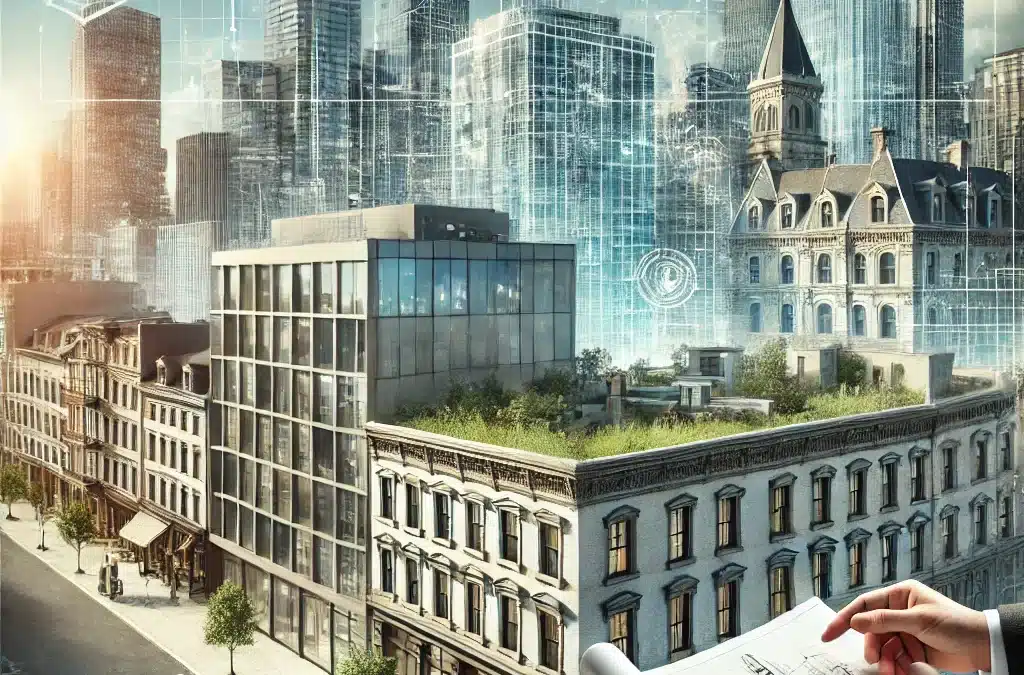Are you struggling to implement the necessary energy conservation measures by December 31st, 2025 to comply with DC BEPS Cycle 1? The Extended Deep Energy Retrofit (EDER) pathway offers a golden opportunity for building owners to extend your deadline. This flexible, phased approach allows buildings to meet compliance goals over multiple cycles, making it more feasible to comply with BEPS overtime.
What is the EDER Pathway?
The EDER pathway, introduced by the Department of Energy & Environment (DOEE), is a game-changer for building owners who are ready to commit to ambitious energy upgrades. Here’s what makes it special:
- Phased Retrofits: Break the process into manageable steps, completing energy improvements over time.
- Ambitious Targets: Achieve higher energy savings than standard compliance options.
- Extended Timeline: Spread compliance efforts across multiple BEPS cycles, giving you breathing room to plan and act.
Why Consider the EDER Pathway?
Choosing the EDER pathway is more than just checking a compliance box—it’s about setting your building up for long-term success. Here’s how it can help:
- Ease the Pressure: Spread out retrofit costs and efforts instead of scrambling to meet deadlines.
- Plan Strategically: Align energy upgrades with your long-term financial and operational goals.
- Avoid Penalties: Ensure compliance and sidestep fines.
How Does the EDER Pathway Work?
The EDER process isn’t just flexible—it’s strategic. Here’s what to expect:
- Start with an Energy Audit: Discover where your building is losing energy and identify improvement opportunities.
- Create a Phased Plan: Set realistic interim and long-term energy-saving goals.
- Take Action in Phases: Kick things off with at least one Energy Efficiency Measure (EEM) in the first compliance cycle.
- Submit an ACP Application: Share your plan with DOEE, outlining your savings goals and milestones.
- Track Progress: Regularly report on your improvements and adjust strategies as needed.
- Secure Funding: Budget for upgrades and explore financial assistance to lighten the load.
- Refine and Monitor: Keep an eye on energy performance and fine-tune your plan along the way.
How to Determine Your Savings Target Under EDER
The EDER pathway sets energy savings targets based on how far your building’s baseline score is from the BEPS standard.
To understand how much energy your building needs to save under the EDER pathway, follow these steps:
- Find Your Distance from BEPS:
- Visit the D.C. Open Data BEPS Map.
- Search for your property and click on it.
- Scroll down until you see “DISTANCE_FROM_BEPS_ESTIMATED”—this is your percentage distance from the BEPS target.
- Use the Table Below to Determine Your Savings Requirement:
- Depending on your distance from BEPS, you’ll need to achieve specific Site EUI savings over a two- or three-Cycle EDER plan.

Good news for condos and co-ops: Since the median baseline score for D.C. multifamily buildings is above 50 (currently 66), all multifamily buildings in D.C. are considered High Performing Property Types. This means you can disregard the column labeled “Building is NOT a High Performing Property Type” and focus solely on the High Performing Property Type columns.
Making the Right Choice
Once you know your distance from BEPS, you can use the table above to determine how much energy you’ll need to save. For buildings with greater gaps, choosing the Three-Cycle EDER option provides more time to achieve higher savings while spreading out costs.
By starting this process early, you’ll have the opportunity to strategically phase your energy upgrades, ensuring compliance without last-minute stress or penalties.
Now that you understand your savings target, it’s time to act!
Time is of the Essence: Act Now to Secure Your Extension
If you’re considering the EDER pathway, it’s critical to act quickly. Here’s why:
- Energy Audits Take Time: Completing a comprehensive energy audit can take up to three months, especially if scheduling and access to your building pose challenges. Without this step, you won’t be able to identify and prioritize the energy efficiency measures (EEMs) needed for your plan.
- Implementing an Energy Efficiency Measure (ECM): DOEE requires you to implement at least one ECM before the end of Cycle 1. Depending on the complexity of the measure and whether an RFP is needed, this process can take 12 months or more, leaving little room for delays.
- Risk of Rejected Applications: If your EDER application isn’t accepted by DOEE, you’ll need to comply with one of the two standard Cycle 1 pathways. This could leave you scrambling to implement energy upgrades in an even shorter timeframe, increasing the likelihood of non-compliance and steep fines.
The clock is ticking, and every day counts. Starting the process now is the best way to ensure your building stays on track, avoids penalties, and secures the benefits of the EDER pathway. Waiting too long may force your hand into more rushed and costly solutions. Don’t risk it—take action today!
Partner with Honeydew Advisors to Navigate EDER
We understand that BEPS compliance can be confusing—but you don’t have to go it alone. At Honeydew Advisors, we specialize in helping buildings like yours navigate compliance challenges while maximizing energy savings.
From energy audits to crafting phased plans and submitting applications, we’ll be by your side every step of the way. Let’s turn compliance into an opportunity to future-proof your building from BEPS penalties!
Ready to take the next step? Contact us today at info@honeydewadvisors.com or by filling out the intake form below. Together, we’ll make compliance work for you!

